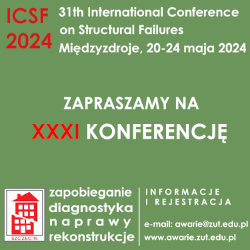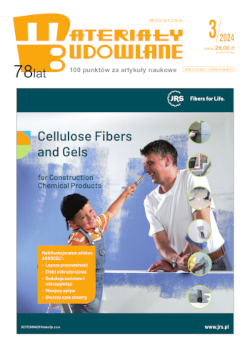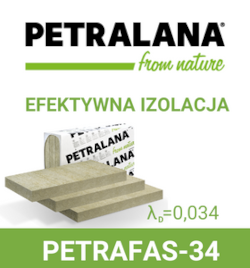dr inż. Roman Jaskulski, Politechnika Warszawska, Wydział Budownictwa, Mechaniki i Petrochemii
dr inż. Wojciech Kubissa, Politechnika Warszawska, Wydział Budownictwa, Mechaniki i Petrochemii
Autor do korespondencji e-mail : Ten adres pocztowy jest chroniony przed spamowaniem. Aby go zobaczyć, konieczne jest włączenie w przeglądarce obsługi JavaScript.
DOI: 10.15199/33.2017.03.11
W artykule przedstawiono wyniki prognozowania wytrzymałości na ściskanie 61 betonów wykonanych z zastosowaniem kruszywa z recyklingu betonu. Do tego celu wykorzystano gotowy model w postaci drzewa decyzyjnego wygenerowanego z wykorzystaniem algorytmu M5’, uwzględniający parametry składu mieszanki betonowej. Ze względu na niezadowalającą zgodność prognozowanych wartości wytrzymało- ści i wyników badań przedstawiono propozycję prostej modyfikacji modelu. Zmodyfikowany model uwzględnił w sposób jawny jakość wykorzystanego kruszywa z recyklingu i pozwolił lepiej oszacować wytrzymałość analizowanych betonów. Średni błąd oszacowania obniżył się z 16,4% do 11,6%, a liczba mieszanek, w przypadku których błąd oszacowania był mniejszy od średniego błędu, zwiększyła się z 26 do 32.
Słowa kluczowe: : beton, kruszywo z recyklingu, wytrzymałość na ściskanie, drzewo decyzyjne.
* * *
Proper design and implementation of waterproofing – theory and reality
The results of forecasting the strength of 61 concretes made with the use of recycled concrete aggregate were presented. The ready-made model in the form of a decision tree generated by an algorithm M5’ was used, which is based on composition parameters of the concrete mixes. Due to unsatisfactory consistency of calculated values and results of the strength tests proposes a simple modification of the model was proposed. The modified model takes into account explicitly the quality of the used recycled aggregates and allowed better estimationof the strength of the tested concretes. The average error of estimation decreased from 16.4% to 11.6% and the number of mixes for which estimation error was less than the average increased from 26 to 32.
Keywords: concrete, RCA, compression strength, decision tree.
Literatura
[1] Abbas Abbaspour, Gholamreza Fathifazl, O. Burkan Isgor, A. Ghani Razaqpur, Benoît
Fournier, Simon Foo. 2009. „Durability of recycled aggregate concretedesigned withEquivalent Mortar Volume method”. Cement and Concrete Composites 31 (8): 555 – 563.
[2] Behnood Ali, Jan Olek, Michał Antoni Glinicki. 2015. „Predicting compressive strength
of recycled aggregate concrete using M5’ model”. 11th International Symposium on Brittle Matrix Composites: 381 – 391.
[3] Behnood Ali, Jan Olek, Michał Antoni Glinicki. 2015. „Predicting modulus elasticity of recycled aggregate concrete using M5’ model tree algorithm”. Construction and Building Materials 94: 137–147.
[4] Czarnecki Lech, Marek Kapron. 2010. „Sustainable construction as a research area”. International Journal of the Society of Materials Engineering for Resources 17 (2): 99 – 106.
[5] Czarnecki Lech, Wiesław Kurdowski. 2007. „Tendencje kształtujące przyszłość betonu”. Budownictwo, Technologie, Architektura 1: 50 – 55.
[6] Dantas Adriana Trocoli Abdon, Mônica Batista Leite, Koji de Jesus Nagahama. 2013. „Prediction of compressive strength of concrete containing construction anddemolition waste using artificial neural networks”. Construction and Building Materials 38, 717 – 722 DOI: 10.1016/j.conbuildmat.2012.09.026.
[7] Deepa C., K. Sathiya Kumari, V. Pream Sudha. 2010. „Prediction of the compressive strength of high performance concrete mix using tree based modeling”. International Journal of Computer Applications 6 (5): 18 – 24.
[8] Deshpande Neela, Shreenivas Londhe, Sushma Kulkarni. 2014. „Modeling compressive strength of recycled aggregate concrete by Artificial Neural Network, Model Tree and Non-linear Regression”. International Journal of Sustainable Built Environment 3 (2): 187 – 198.
[9] Fardis Michael N. (red.) 2012. Innovative materials and techniques in concrete construction.ACES Workshop. Dordrecht. Springer Netherlands. DOI: 10.1007/978-94-007-1997-2.
[10] Fathifazl Gholamreza, Abbaspour Abbas, A. Ghani Razaqpur, O. Burkan Isgor, Benoît Fournier, Foo Simon. 2009. „New mixture proportioning method for concrete made with coarse recycled concrete aggregate”. Journal of Materials in Civil Engineering 21 (10): 601 – 611.
[11] Glinicki Michał Antoni. 2007. „Tendencje rozwojowe technologii betonu”. Przegląd Budowlany 78 (12): 24 – 30.
[12] Jiménez Cristian, Marilda Barra, Susanna Valls, Diego Fernando Aponte, Enric Vázquez. 2014. „Durability of recycled aggregate concrete designed with the Equivalent Mortar Volume (EMV) method: Validation under the Spanish context and its adaptation to Bolomey methodology”. Materiales de Construcción 64 (313): e006.
[13] Kausay Tibor, Tamás Simon, György Balázs. 2008. „Technical Guideline for Recycled Aggregate Concrete in Hungary”. Concrete Structures 9: 45 – 55.
[14] Koper Artur, Marcin Koper, Wojciech Kubissa. 2016. „Determining Concrete Composition on Recycled Aggregates”. Key Engineering Materials 677: 266 – 272.
[15] Kou, Shi-Cong, Chi-Sun Poon. 2013. „Long-term mechanical and durability properties of recycled aggregate concrete prepared with the incorporation of fly ash”. Cement and Concrete Composites 37: 12 – 19.
[16] Kozioł Wiesław, Paweł Kawalec. 2008. „Kruszywa alternatywne w budownictwie”. Nowoczesne Budownictwo Inżynieryjne 4: 34 – 37.
[17] Kubissa Jacek, Marcin Koper, Włodzimierz Koper, Wojciech Kubissa, Artur Koper. 2015. „Water Demand of Concrete Recycled Aggregates” in 7th Scientific-Technical Conference on Material Problems in Civil Engineering MATBUD 2015 Procedia Engineering 108: 63 – 71.
[18] Kubissa Wojciech, Roman Jaskulski, Artur Koper, Marcin Supera. 2015. „High Performance Concrete with SCM and Recycled Aggregate”. Key Engineering Materials 677: 233 – 240.
[19] Koper Artur, Marcin Koper, Wojciech Kubissa. 2016. „Determining Concrete Composition on Recycled Aggregates”. Key Engineering Materials 677: 266 – 272.
[20] Kwan Wai Hoe, Mahyuddin Ramli, and Kenn Jhun Kam, and Mohd Zailan Sulieman. 2012. „Influence of the amount of recycled coarse aggregate in concrete design anddurability properties”. Construction and Building Materials 26 (1): 565 – 573.
[21] Lima Carmine, Antonio Caggiano, Ciro Faella, Enzo Martinelli, Marco Pepe, Roberto Realfonzo. 2013. „Physical properties and mechanical behaviour of concretemade with recycled aggregates and fly ash”. Construction and Building Materials 47: 547 – 559.
[22] Limbachiya Mukesh, Mohammed Seddik Meddah, Youssef Ouchagour. 2012. „Use of recycled concrete aggregate in fly-ash concreto”. Construction and Building Materials 27 (1): 439 – 449.
[23] RILEM TC 121-DRG. 1994. „Specifications for concrete with recycled aggregates”. Materials and Structures 27 (173): 557 – 559.
[24] Tadeusiewicz Ryszard. 1998. Elementarne wprowadzenie do techniki sieci neuronowych z przykładowymi programami. Warszawa. Akademicka Oficyna Wydawnicza PLJ.
[25] Wang Yong, Ian H. Witten. 1997. „Inducing model trees for continuous classes”. Proceedings of the poster papers of the 9th
European Conference on Machine Learning: 128 – 137.
[26] Uchwała nr 217 Rady Ministrów. „Krajowy plan gospodarki odpadami 2014”. 2011. Monitor Polski 101 (1183): 5270 – 5353
Otrzymano: 31.01.2017 r
Materiały Budowlane 3/2017, str. 42-46 (spis treści >>)





























